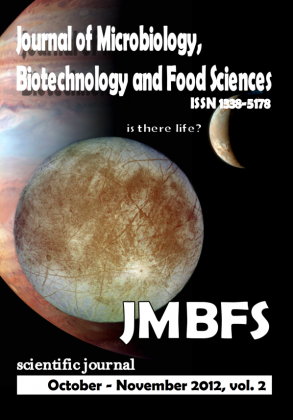BISPHENOL A AND ITS POTENTIAL TOXIC EFFECTS ON LIVING ORGANISMS
Keywords:
bisphenol A, environmental exposure, toxic effects, healthAbstract
Bisphenol A (BPA), 2, 2,-bis (4-hydroxyphenyl) propane, CAS No. 80-05-7, is an industrial chemical that is made by combining acetone and phenol. Food is acknowledged to be a main source of exposure to BPA as a consequence of BPA migration from food containers. Several studies have reported BPA migrations from can surface coatings or plastics into foods and food-simulating liquids at high temperatures, and with repeated use of plastic products. Evaluation of BPA confirmed a no-observable adverse effect level (NOAEL) of 5 mg/kg/body weight/day and established a maximum total daily intake (TDI) of 0.05 mg/kg body weight. A metabolism of BPA is characterized mainly by phase II conjugation reactions in the gastrointestinal tract and in the liver. The presence of BPA in the environment can cause serious health problems (endocrine disruptions, neurotoxic, genotoxic and other problems). However, there are controversial opinions about BPA. Based on current knowledge of literature the need for further experimental studies in addressing health of human and animal populations living in different ecosystems may be still useful.Downloads
Download data is not yet available.
Downloads
Published
2012-10-01
How to Cite
Å utiaková, I., KovalkoviÄová, N., Tulenková, M., & Å utiak, V. (2012). BISPHENOL A AND ITS POTENTIAL TOXIC EFFECTS ON LIVING ORGANISMS. Journal of Microbiology, Biotechnology and Food Sciences, 2(2), 526–535. Retrieved from https://office2.jmbfs.org/index.php/JMBFS/article/view/7161
Issue
Section
Biotechnology
License
Copyright (c) 2012 Irena Å utiaková, Natália KovalkoviÄová, Mária Tulenková, Václav Å utiak

This work is licensed under a Creative Commons Attribution 4.0 International License.
All papers published in the Journal of Microbiology, Biotechnology and Food Sciences are published under a CC-BY licence (CC-BY 4.0). Published materials can be shared (copy and redistribute the material in any medium or format) and adapted (remix, transform, and build upon the material for any purpose, even commercially) with specifying the author(s).

